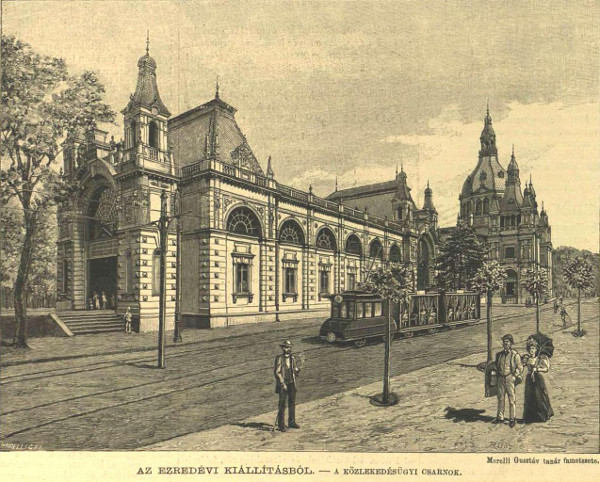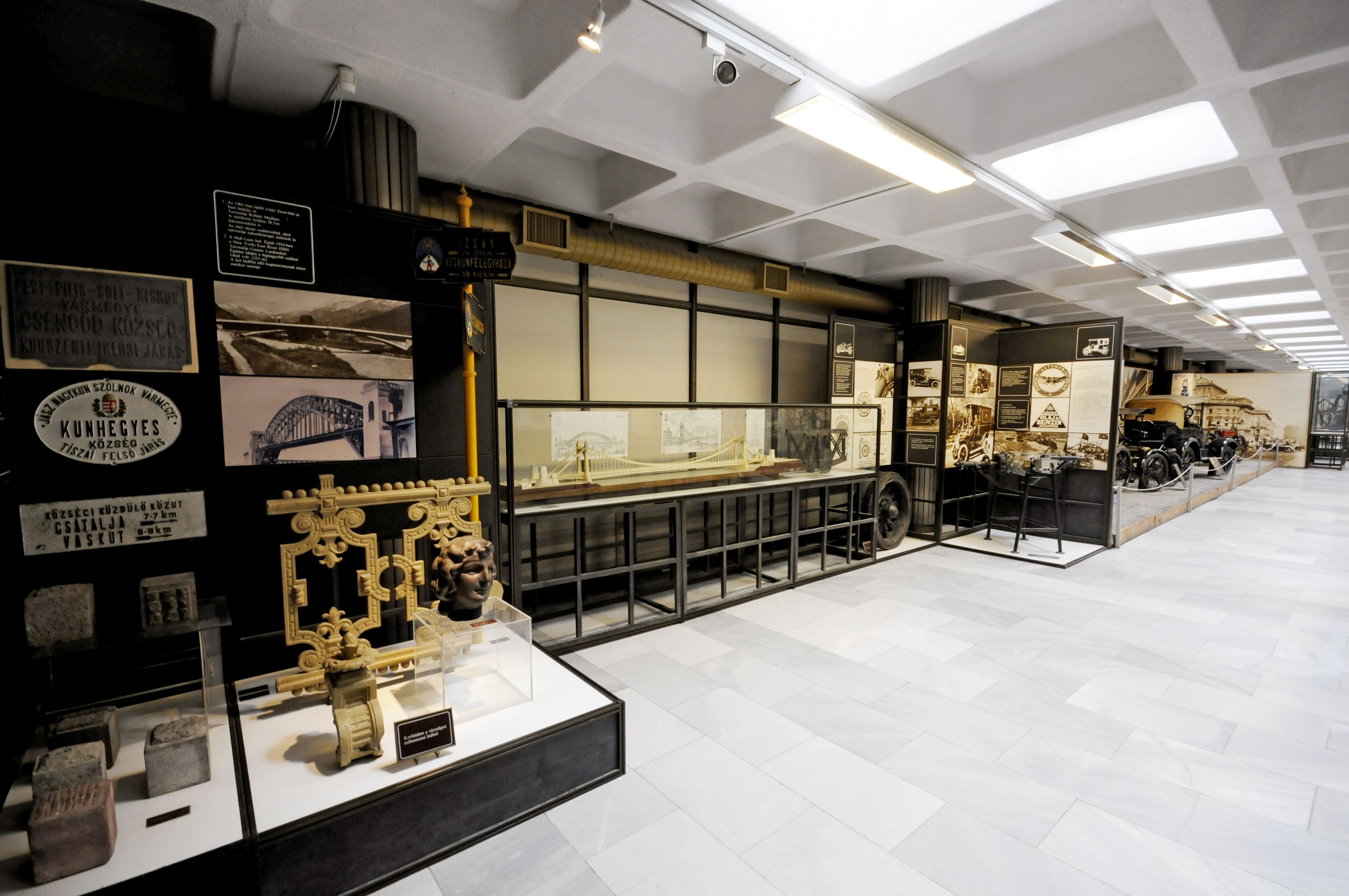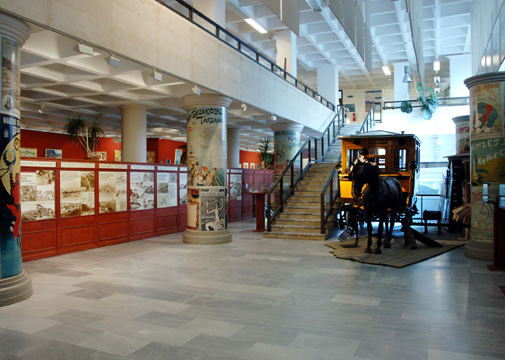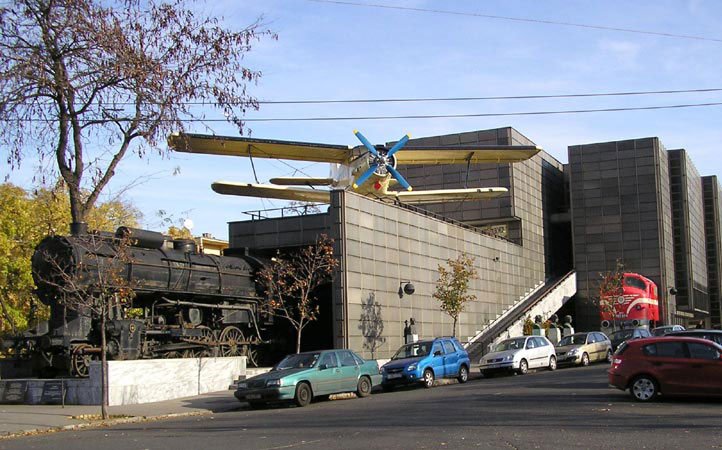From 28 May, the new temporary exhibition of the Museum of Transport can be visited at the Northern Maintenance Depot, the museum's future new home. The current seasonal exhibition covers only part of the Diesel Hall of the Northern Maintenance Depot, barely 5,000 square meters. This is a good indication of the dimensions of the future new museum. Almost to the day in the life of the museum, 35 years before the current exhibition, a significant event took place, as the new wing of the museum was handed over.
The expansion and removal of the Museum of Transport from the Városliget has been on the agenda since the 1910s. 22 years after the destruction of World War II, in 1966, the museum reopened in the remains of a damaged old building, which, however, struggled with an increasingly severe lack of space.

Such was the case with the Museum of Transport in 1896, at the time of the millennial exhibition. At the time, it was only intended as a temporary exhibition hall
The flight material was placed in the Petőfi Hall, partly on its upper floor in an unheated room that was open to the public from 1985 onwards.
A new part of the building was planned next to the museum. The expansion of the Museum of Transport, as mentioned, has been planned since 1910. One option would have been to build a new museum building in Lágymányos, and the other - as suggested by the museum's first director, Kajetán Banovics - would have added a new wing to the existing building.

Upstairs part of the new wing handed over 35 years ago (Photo: MMKM)
The museum originally had a larger hall, the Hosszúcsarnok [Long Hall], to the left of the 67-meter-high dome hall. The first director would have rebuilt this by building a similar hall on the other side of the dome.
In the 1970s, a different solution was found, with the construction of a completely new four-storey building next to the longitudinal part of the building. However, quite specific solutions had to be applied in the new building. On the one hand, between the two parts of the building it was only possible to move from the old museum part on the top floor of the new building, i.e. not on the ground floor, as the old building had restoration workshops and smaller warehouses that they did not want to relocate. The new wing was given an elevator, but it only ran between the basement level and the first floor, not the second (it was later rebuilt, as the passage between the two buildings was also solved).
The construction took 8 years, which was an extremely long time even at that time, it is no coincidence that the 4 June 1987 issue of Népszava noted:
“ We do not mean to ruin the celebration, but it should be noted that the new wing was built up a bit slowly, the plans of Vilmos Schneller have been completed for eight years. In any case, the exhibition area has now grown to five thousand square meters, much less material will be stuck in the warehouses than before. The construction of the new wing and the renovation of the old building cost 120 million forints. ”
The new wing really expanded the museum's exhibition possibilities, with four old trams (and one HÉV car) on the lowest level, and an omnibus in the first exhibition, while horse-drawn vehicles and early motor-driven vehicles were also presented in a kind of street environment. We used the definition of a motor-driven vehicle because one of them was one of the first vehicles equipped with an internal four-wheel internal combustion engine in Hungary, which was not a car, but actually two bicycles built together, ie a quadcycle, made in 1900 by Nándor Hóra, a bicycle racer and bicycle dealer.
Trams on the ground floor of the new wing (Photo: MMKM)
However, there were a few problems with the new building. As we wrote, it only had a connection to the old exhibition on the second floor, on the other hand it had a lot of stairs, the trams already mentioned could be reached by a few steps from the lower level, and a few steps led to the seasonal exhibition space, so it was hardly accessible with a pram or wheelchair. This could later be improved somewhat with stair lifts, but it was still not possible to get everywhere. A tower building was finally built between the two parts of the building in 2001, allowing a passage between the old and the new building on the ground floor as well.
However, the new wing has hosted a number of interesting and exciting exhibitions in the coming decades, with many hundreds of thousands of people visiting the exhibitions.

Ground floor of the new wing in the 2000s (Photo: MMKM)
However, the renovation and reconstruction of the Museum of Transport was already inevitable in the mid-2010s, according to the first plans the museum would have been renovated in Városliget according to the original plans, with an underground extension, but it would not have been large enough to present the most significant. pieces of the collection, so it was finally decided that the Museum of Transport would be reborn in a new location, the Northern Maintenance Depot's Diesel Hall, where there would be enough space for the collection to present itself in a worthy way.
The old Museum of Transport in Városliget was demolished in 2017 to rebuild the building designed by Ferenc Pfaff, which would regain its pre-World War II appearance, and according to an earlier decision, it would open as the House of Hungarian Innovation, but the reconstruction has not yet begun.
As for the new exhibition venue, the dimensions are well illustrated by the fact that the old museum, including the wing that opened in 1987, was only as large - 5,000 square meters - as the temporary exhibition at the Museum of Transport's future new venue in the Diesel Hall, but only in a small part of it, that can be visited since 28 May.
Cover photo: the wing of the Museum of Transport handed over in 1987 (Photo: Wikipedia)




































Hozzászólások
Log in or register to comment!
Login Registration